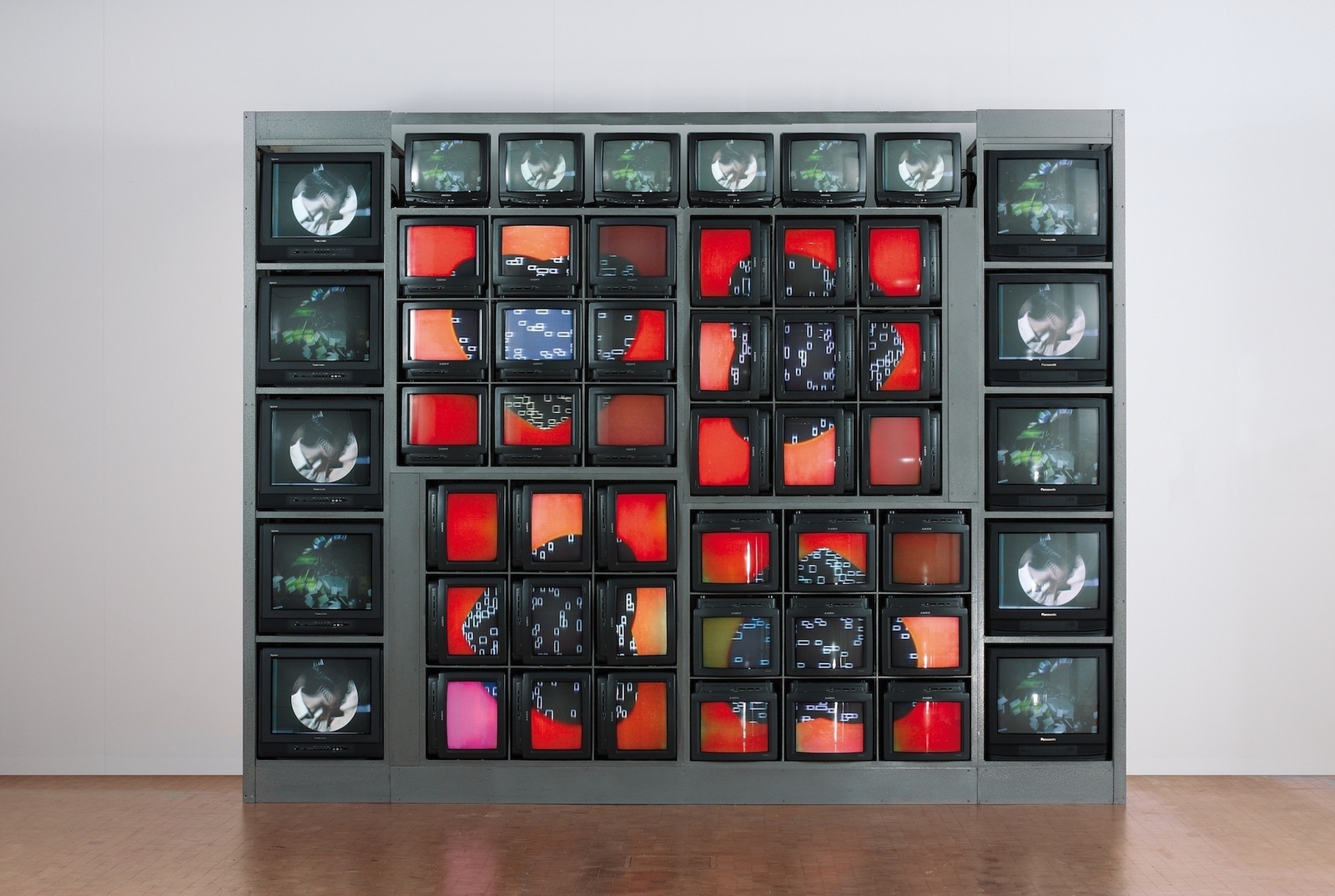
Nam June Paik. Internet Dream, 1994. Credit: ICA Boston
In 1974 Nam June Paik envisioned an “electronic superhighway,” a utopian space of emergent, networked technologies whose collective powers could initiate social change. These changes are the subject of a new exhibition, entitled Art in the Age of the Internet at the Institute of Contemporary Art, Boston, featuring work by Paik—as well as artists across the globe including Judith Barry, Dara Birnbaum, Harun Farocki, Lynn Hershman Leeson, Trevor Paglen, Thomas Ruff, Hito Steyerl, and Martine Syms. Through painting, sculpture, installation, and new media, the works in the show address how the internet has shaped contemporary culture and artistic production since its inception in 1989. The exhibition, arranged thematically, traces the impact of the world wide web on the human body, surveillance, the increasing accessibility and consumption of information and images, virtual communities, and social media.
Another current running through the exhibition is the juxtaposition of new and old technologies used to fabricate fresh content. Avery Singer explains how she combines traditional aspects of painting—a gessoed canvas support, for example—with designs she has rendered in the 3D modeling program Sketchup in an Art21 New York Close Up film. This video is on view in the museum’s digital learning space in conjunction with the show through May 20.
News of the Week
- All the Things I Lost in the Flood (Rizzoli), a new book by Laurie Anderson is now available. The book is a collection of works from Anderson’s career featuring her sketchbooks, drawings, and documentation from various projects, installations, and performances. Its publication coincides with the release of Anderson’s new album, Landfall, a collaboration with the Kronos Quartet, this Friday, February 16.
- In D.C., the Hirshhorn Museum will project a video by Krzysztof Wodiczko on its building’s facade for three nights, beginning tomorrow, Tuesday, February 13 from 6:30-9:30 p.m. The projection commemorates the thirtieth anniversary of the site-specific video installation first displayed in October 1988.
- Next Monday, a flag designed by Trevor Paglen entitled Weeping Angel will be raised at Creative Time’s headquarters in New York City, and over a dozen cultural organizations nationwide, as part of the series, Pledges of Allegiance.
- Edgar Arceneaux will perform Until Until Until at the YBCA in San Francisco on February 22-24. Featured in Season 8 of Art in the Twenty-First Century, the performance reenacts and reimagines Ben Vereen’s tragically misunderstood blackface performance at Ronald Reagan’s 1981 Inaugural Gala.
The Artist Speaks
In a recent talk at LMAK Books+Design with The Brooklyn Rail’s Thyrza Nichols Goodeve, Caroline Woolard described the origin for the works included in her current show Carried on Both Sides:
“I know that, often, the most powerful thing I can do in a group is to create a shared vision, and take action—not make an object. And yet, I thought: What if the tables and objects in our spaces were as imaginative as the conversations we were having?”
The collaborative, three-part installation by Caroline Woolard, Helen Lee, Alexander Rosenberg, and Lika Volkova considers how the spaces artists encounter contribute to the possibilities they imagine. The show closes on February 25 at LMAK Gallery, New York.
Looking Back
Krzysztof Wodiczko examines the role of art in public spaces in the Power episode of Art in the Twentieth-First Century. Wodiczko’s mother fled a ghetto in Poland during World War II, and his works often comment on the impact of war and violence. By projecting his projects in public spaces, like at the Hirschhorn later this week, Wodiczko relies on communities themselves to “break the code of silence, to open up and speak about what’s unspeakable.”



